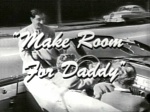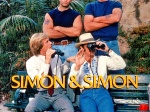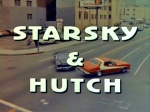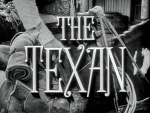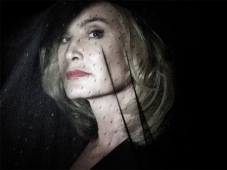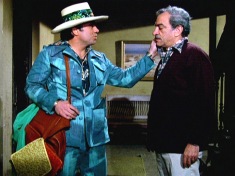 Vintage TV westerns tend to be violent. Really violent. And considering all the gun violence that rages across the network frontier, it was inevitable that a government official would step in and demand that everybody lay down their firearms. That’s what happens in a Gunsmoke I saw recently (2:25, “Bureaucrat,” March 1957). Marshal Dillon is ordered by a visiting supervisor from Washington to make Dodge City a gun-free zone. The idea is to eliminate the shooting deaths which are a weekly feature of this show.
Vintage TV westerns tend to be violent. Really violent. And considering all the gun violence that rages across the network frontier, it was inevitable that a government official would step in and demand that everybody lay down their firearms. That’s what happens in a Gunsmoke I saw recently (2:25, “Bureaucrat,” March 1957). Marshal Dillon is ordered by a visiting supervisor from Washington to make Dodge City a gun-free zone. The idea is to eliminate the shooting deaths which are a weekly feature of this show.
So far, the script doesn’t care whether you see this as a common-sense step toward public safety, or as an assault on the Second Amendment. The citizens of Dodge see it as a means of being rendered helpless to defend themselves against the sort of people who don’t obey gun laws (or any other laws). I won’t bury you in plot details but in the end, the experiment in gun control is dropped after failing completely.
The script was based on a Gunsmoke radio play by John Meston, offering a muscular defense of frontier justice along with a swat at government intrusion. A lot of these early Gunsmokes are steeped in the grim insecurity of the Cold War, when the threat of sudden death on a massive scale was a very real danger. From that danger come these masculine studies in keeping the wolf from civilization’s door.
If this episode had been from the late-‘60s, written by someone from the Rod Serling – Sterling Silliphant School of Earnest Social Commentary, we’d probably see Dodge City’s loudest gun rights advocate accidentally shoot his own little girl to death. Or maybe he’d lead an angry mob to gun down an Indian suspect (who turns out to be innocent), as the wise old government bureaucrat sighs. Personally, if I have to choose, I prefer the Meston approach, but the level of violence would be about the same either way.
I’m not sure that you can have a really compelling western series without violence. Dramatically, threatened or implied violence can be more effective than the real thing. For example, take this episode of Wanted: Dead or Alive (1:15, “Rawhide Breed,” December 1958), one even grittier than usual for this two-fisted series. Steve McQueen’s bounty hunter character is stranded in the Arizona desert with a companion. Hostile Apaches are scattered everywhere, and the sanctuary of an Army fort is many miles away. McQueen and friend are traveling on foot. They’ll die if they don’t find water. They manage to capture a young Apache, and McQueen tries to intimidate him into revealing the location of the nearest water hole.
Any other show would have the hero shout at the Indian, or appeal to his sense of mercy. But this is Wanted: Dead or Alive, so McQueen threatens to slice the Apache’s nose off.
A scriptwriter from the Serling-Silliphant School would now have McQueen be overwhelmed by remorse for resorting to such a brutal display: “Look what I’ve become! The savage one is me!” He’d recoil in shame and drop to his knees, whereupon the unexpectedly kindly Indian would point out the water hole, and both would drink together.
But this is a Samuel Peeples script, the product of an earlier era. McQueen never does slice off the truculent Apache’s nose (imagine getting that past Standards and Practices!). He drops the knife with a sigh of resignation— not over his own violent impulses, but because the threat doesn’t work. The first moment McQueen is distracted, the Apache runs away. Soon there are encounters with other Apaches, all of whom are gunned down just before they can kill our protagonists.
There’s no attempt to explain why the Apaches are out for blood. They’re just there to move the action along. Is that bad? Is it lazy writing? Not necessarily. Westerns exist in a universe in which violence spurs action, and actions spur violence. If we can accept those ground rules in Game of Thrones, we can certainly accept them in a ‘50s western. (Admittedly, I’d probably feel differently about this episode if I were of Apache descent.)
The paradox about westerns is that if you take out the violence, all you have left is a travelogue, whereas too much violence reduces your story to a Punch-and-Judy show of monotonous gunfire and men endlessly wincing and falling over. You have to strike the right balance. The producers of Rawhide liked to tackle character studies in which complex people confront their inner demons in a parched landscape, but viewers would write in and complain that they weren’t seeing enough killing (or cattle). Similarly, Chuck Connors recalled how the fans felt a little cheated whenever The Rifleman was able to resolve the week’s conflict without resorting to his awesome rapid-firing rifle.
Some observers would crown the HBO series Deadwood as the greatest TV western of all, and if ever there was an adult western, it’s this one. You get a good measure of historical authenticity, and complex characters whose personalities are revealed slowly over time. Nobody’s purely good or bad, and every relationship includes a degree of conflict. There’s violence to be sure, but primarily there’s misery, a grueling unpleasantness that makes this the least fun western ever. (Its most memorable episode is all about a guy trying to pass a kidney stone, an hour of agony for character and viewer alike.)
Is it art? Maybe. But I guess it’s art that I can get along without. It’s not the level of violence that gets oppressive, but the ugliness and the ennui. There are unforgettable things in Deadwood, but I lost interest in the show. It spends so much time gazing into its own filthy navel that it stopped entertaining me and I drifted away in the middle of the third season.
For the most part, I have even less interest in the antiseptic old kiddie westerns like The Roy Rogers Show and The Gene Autry Show. The dopey sidekicks are incredibly annoying, and the stories tend to be uninspired. I need a western with a little more meat on its bones than that. But there are juvenile westerns worth watching, especially if you really, really like dogs (The Adventures of Rin-Tin-Tin), horses (Fury, The Adventures of Champion) or trains (Casey Jones).
There are also women’s westerns. Dr. Quinn, Medicine Woman is the most conspicuous example, but I’d add Here Come the Brides and Little House on the Prairie to that category and maybe The Big Valley too. The Virginian crosses into that territory pretty frequently as well. There’s nothing wrong with this sub-genre, but it just doesn’t appeal to me and I’m not sure why. There are plenty of shows I like that explore love, relationships and family life. But I don’t want that stuff to crowd out the shoot-outs and the saloon fights, so we’re right back to the dilemma of striking the right balance.
The level of violence isn’t really a concern, at least as long as my young son isn’t watching it with me. I want whatever level of violence the story needs.
For me, the perfect TV western will have the advantages of brevity, authentic location shooting, plenty of action, a hero I can admire, and plots that are complex enough to be intellectually stimulating without sagging under the weight of extraneous detail. Gunsmoke comes close, but it’s too frequently formulaic (stranger comes to town —> conflict ensues —> someone gets killed).
 A few sentimental favorites aside, a clear winner emerges. It’s Have Gun – Will Travel. It avoids the genre’s fatal extremes: the simple-minded shoot-‘em-up horse operas of the classical tradition, and the tiresome brooding, self-absorbed anti-heroes of the modern. Violence is only used for dramatic impact; it’s there as often as the story requires it, but no more. It’s got Richard Boone and that perfect voice of his.
A few sentimental favorites aside, a clear winner emerges. It’s Have Gun – Will Travel. It avoids the genre’s fatal extremes: the simple-minded shoot-‘em-up horse operas of the classical tradition, and the tiresome brooding, self-absorbed anti-heroes of the modern. Violence is only used for dramatic impact; it’s there as often as the story requires it, but no more. It’s got Richard Boone and that perfect voice of his.
The show doesn’t preach at me. It isn’t trying to save the world. It’s entertaining without ever being silly. It’s intelligent enough to be compelling without being ponderous. It’s got the authentic western scenery, and at 25 minutes an episode, it moves.
Usually the bad guy gets blown away in the end. Sometimes he only gets exposed, shamed and shunned, which can be just as well. Whatever works.
There are episodes here and there in which Paladin describes how his gun was hand-crafted to his exact specifications to ensure perfect balance. That describes the show itself… perfect balance.



